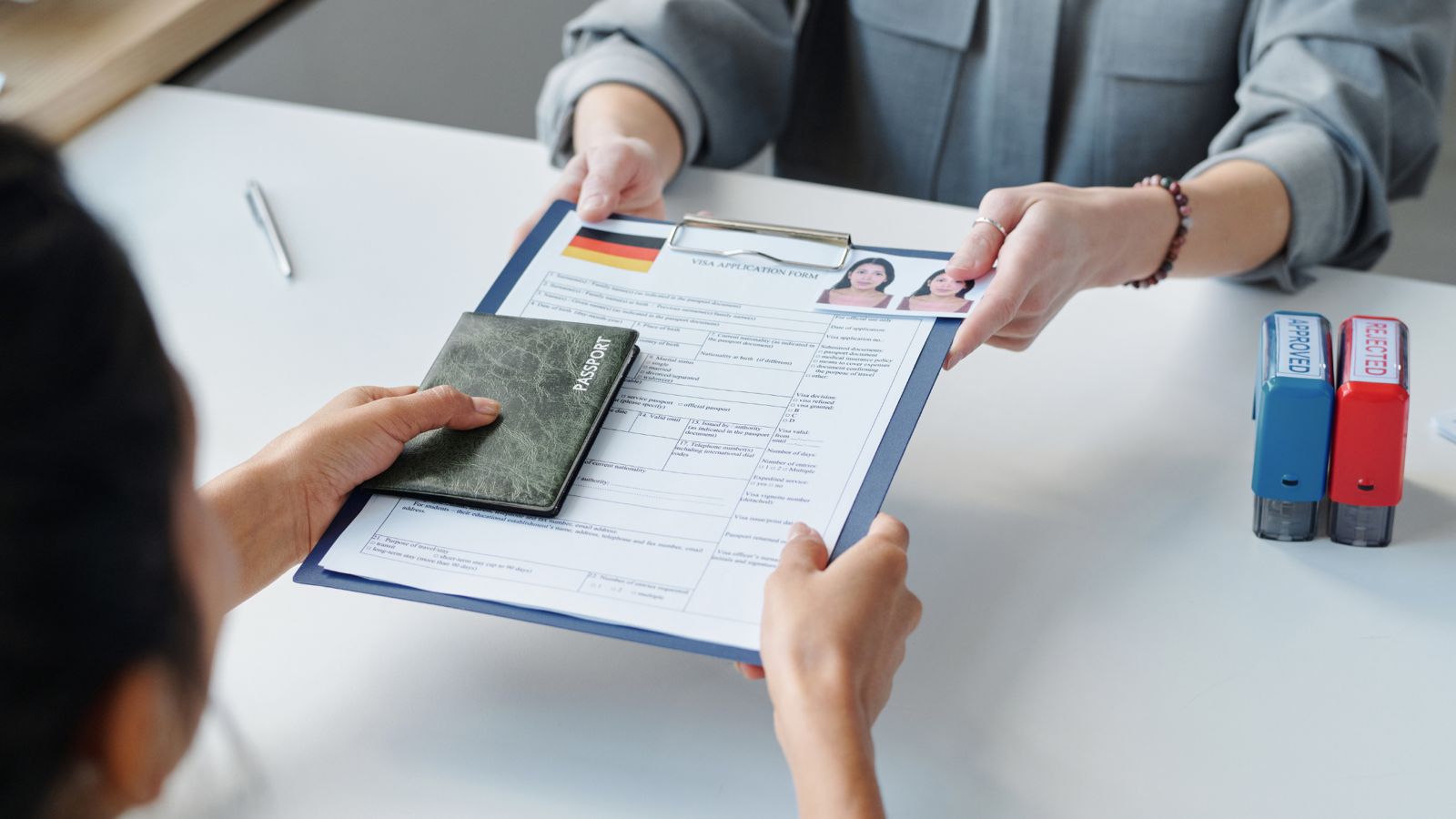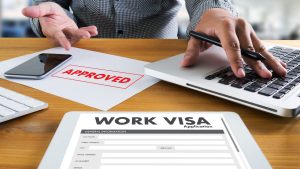Table of Contents
Introduction
A work visa is an official permission that allows you to live and work in a foreign country. It is usually for a specific employment or a specified period of time. Also, the conditions and the procedure for getting one are different in every country.
Now this may sound simple, but I remember when a friend of mine wanted to apply for her first work visa, and she thought it would require just some forms to fill out and to go through an interview. But she got rejected because of poor planning, and she had to handle paperwork and immigration rules even months later.
So, to simplify this process for you, I have made a work visa guide for 2025 with all the updated information.
United States: H-1B Work Visa
If you want to work in the United States, you will need to get an H-1B visa. With this visa, foreign experts can work in specialised jobs in the United States.
The two main requirements are A bachelor’s degree in a specialised field and an employment offer from a US company that is prepared to go through the sponsorship process.
Your employer will have to file a Labour Condition Application (LCA) to prove they’re paying you a fair salary.
The cost is between $6,000 and $10,000, and it is covered by the employers.
United Kingdom: Skilled Worker Visa
The UK introduced some significant reforms in 2025 that made this work visa more difficult to obtain.
From July 22, 2025, A graduate-level qualification (RQF Level 6) is necessary, and the minimum salary threshold has increased to £41,700.
112 lower-skilled occupations have been eliminated from the list of eligibility, and fewer positions are now eligible.
Requirements:
- Graduate-level skills and qualifications
- Minimum £41,700 salary (some exemptions for shortage jobs)
- A Sponsor Licence from a certified UK employer
- English language ability at the B1 level and above
- At least 70 points on the UK’s points-based system
- Applications cost £590–£1,751 depending on job duration and type, plus the Immigration Health Surcharge (£1,035 a year).
Also Read: S Pass Criteria and Quota Guidelines for 2025
Canada: Work Visa Options
Canada has numerous work visas, each working for various occupations and circumstances. The quickest one is typically the Global Talent Stream, which is best for tech professionals.
Popular options:
- Employer-Specific Work Permit – tied to a particular employer and a single job
- Open Work Permit—enables you to work for almost any employer in Canada.
- Global Talent Stream—expedited processing for sought-after tech and STEM jobs
- Post-Graduation Work Permit – for Canadian school graduates
Documents you will need to share:
- A Job offer or a Labour Market Impact Assessment (LMIA) approval.
- Record of qualifications and experience
- Medical and police clearance
- Evidence that you’ll leave Canada when your visa expires (except for applying for permanent residence in the future.
Germany: EU Blue Card
Germany’s EU Blue Card is Europe’s most sought-after work visa for high-skilled workers. In 2025, the minimum salary required is at €48,300, which is reduced to €43,470 for shortage occupations.
Benefits:
- If you have good German language skills, you can get permanent residence within 21 months.
- Your spouse can also work in Germany without restrictions.
- Within a few years, you can freely migrate and work in other EU countries.
Australia: Skill in Demand Visa
Australia completely changed its skilled migration program in July 2025 by replacing the TSS visa with the new Skill in Demand (SID) visa.
The visa comes at a higher fee, which is now AUD 3,210.
Key changes:
- Increased income thresholds: For core skills, it is AUD 76,515, and for specialist skills, it is AUD 141,210.
- More financial documentation requirements for the applicant and their dependents
- Larger fees for dependents accompanying the main applicant
- The visa opens pathways for long-term employment and possible permanent residence, but you must meet the higher income and skill requirements to qualify.
Critical Paperwork for Any Work Visa
In the process of obtaining a work visa, your paperwork will be the most important element, no matter which country you’re going to.
Paperwork you’ll nearly always need:
- Your valid passport with a minimum validity of six months to expire
- Completed visa application form in paper or online, as applicable to the country you’re going to.
- Recent passport-style photos according to country requirements
- Job offer or sponsorship letter from a recognised employer
- Degrees and diplomas as records of qualification.
- Financial evidence that you qualify for income or savings requirements
- Medical test reports (if required) and police clearance certificates
Country-specific additions are:
United States: Certified Labour Condition Application (LCA)
United Kingdom: Result of an English language test, if required
Germany: Recognition of qualifications for regulated professions
The Work Visa Application Process
Different countries have their own separate rules, but all work visas mainly go through the same process:
- Obtain an offer of employment from a sponsoring company.
- The necessary sponsorship documents, such as the Certificate of Sponsorship in the UK or the Labour Condition Application (LCA) in the US, are provided by the employer.
- Then you fill out your online visa application by making sure to include all necessary papers in the appropriate format.
- Take your biometrics appointment to leave fingerprints and a photograph.
- Take an interview if the nation requires it. This is common in America and certain embassy-based applications.
- Wait for a decision, this could range from 10 days to 3-6 months.
Also Read: Understanding the Golden Visa Process: A Complete Tutorial
Common Mistakes That Cause Work Visas to be Rejected
Most work visa refusals are because of small but costly errors. Below are a few of the most common and avoidable mistakes:
- Missing or incomplete documents account for around 35% of denials.
- Inconsistent information across forms and supporting documents
- Outdated/Invalid documents, specifically passports and certificates
- Large, unfamiliar deposits in bank accounts that trigger financial concerns
- Problems with employer sponsorship. This could include working for a company without a license or doing work that does not fit your visa criteria.
Double-checking everything before clicking “submit” is important because it can be costly and time-consuming to sort these problems after you have submitted.
Conclusion
To obtain a work visa in 2025, you need to plan and prepare first. It is true that the regulations have increased in all countries, but there is still excellent hope for deserving professionals if you prepare the right way.
Your chances for approval will increase if you begin early, present all the relevant documents, meet all financial requirements, and use professional assistance when needed.
You can choose to take the help of skilled professionals for the process of application, as it can get complicated for one person to handle. We, at SA Visa Central, help people follow their dreams and facilitate the whole work visa process.
Check out our website here: SA Visa Central.








